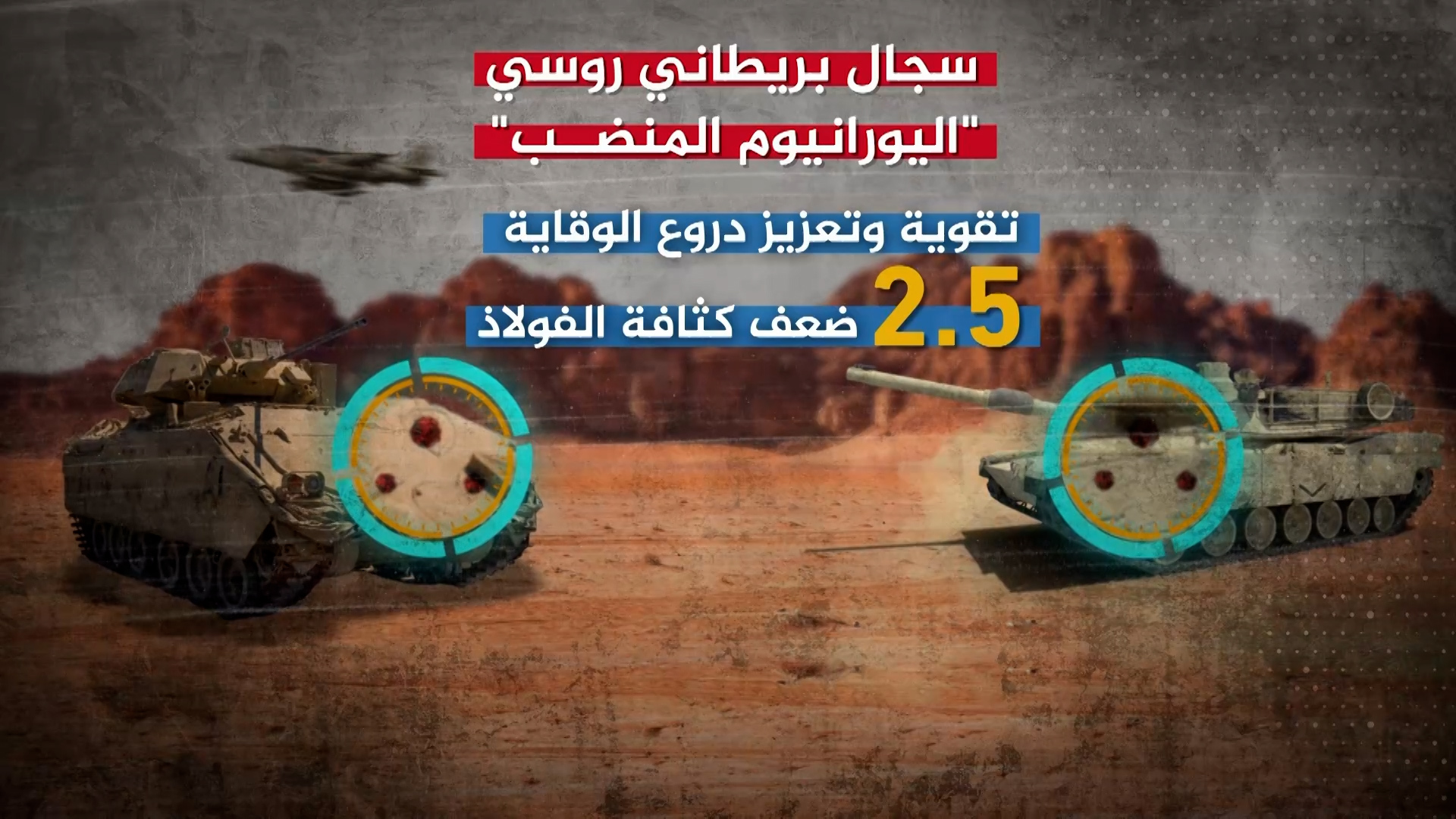LONDON — The longer the battles in Ukraine will become, the more tense tensions between Russia and Britain will be, as the relationship between Moscow and London has moved into a new phase of threat and intimidation following the announcement by the British Ministry of Defense of supplying Ukraine with armor-piercing depleted uranium missiles for use in British-made Challenger 2 tanks that it has given to the Ukrainian army.
This move angered Moscow and prompted Russian President Vladimir Putin to comment on it, stressing that his country would respond appropriately "after the West began using weapons that include nuclear components," to which the British Ministry of Defense responded that the world knows that depleted uranium is not considered a nuclear weapon, and that this type of uranium is found in many weapons, including weapons used by Russia itself.
Nevertheless, Russia insists that the use of these missiles is a dangerous development and drags the world towards nuclear war, as expressed by the President of the Russian Security Council, Dmitry Medvedev, who said that supplying these weapons to Ukraine "brings the world closer to a nuclear end." And why does Russia fear him?
What is depleted uranium?
It is the material left over after most forms of high-radioactivity uranium known as U-235 are removed from natural uranium ore, and these forms are capable of providing fuel for nuclear energy production and nuclear warheads used in nuclear weapons.
Depleted uranium is less radioactive, emitting alpha molecules that do not have enough energy to pass through the skin, making it not considered a nuclear weapon, and exposure to human skin does not pose a very significant risk, although depleted uranium may pose a health hazard when inhaled.
In the seventies of the last century, the US army began to manufacture armor-piercing bombers containing depleted uranium, and began to add it to tank armor to strengthen its ability to resist missiles, and the US army introduced depleted uranium to the missiles launched by A10 air support aircraft, which are missiles capable of destroying tanks.
What are depleted uranium shells?
Depleted uranium is used in weapons and missiles, as it is able to penetrate tanks and armor more easily due to its density and physical properties.
The IAEA says depleted uranium is used in armor-piercing weapons as well as in the manufacture of armor itself to strengthen it, and shells containing depleted uranium become sharper and stronger and ignite quickly upon contact with armor.
Is depleted uranium a nuclear weapon?
According to the United Nations Institute for Disarmament Research (UNIDIR), depleted or depleted uranium ammunition cannot be considered nuclear weapons, and that uranium does not meet the legal definition of nuclear, radiological, toxic, chemical or incendiary weapons.
Does depleted uranium pose a health hazard?
According to a statement by the British Ministry of Defence, a group of scientists at the Royal Society Foundation, which specializes in scientific and environmental research, has concluded that the health impact of the use of weapons containing depleted uranium is considered "very low."
On the other hand, a 2022 report by the United Nations Environment Program (UNEP) confirmed that the use of depleted uranium poses a threat to the environment in Ukraine, and there are countries that have banned its use in weapons, such as Belgium and Costa Rica.
Is there a radiation risk from the use of depleted uranium?
According to the EU website, of all radioactive uranium isotopes, depleted uranium is the least radioactive, usually 40% less than untreated uranium.
The activity of undepleted uranium is mainly in the form of "alpha" particles that do not penetrate the skin, meaning that the radiation hazards from depleted uranium may arise from inhaling dust, drinking contaminated water, or shrapnel entering the body.
Has depleted uranium ever been used?
Depleted uranium was widely used by the U.S. military in the first Gulf War in 1991 against Iraqi T-72 tanks, as it did in 72 during the invasion of Iraq, and in Serbia and Kosovo.
Some symptoms and diseases appeared among the American and British soldiers who participated in the invasion of Iraq, and according to some studies, more than 250,<> soldiers who participated in the Gulf War and the invasion of Iraq suffered from symptoms such as shortness of breath, inability to sleep and headaches, which was then called the disease "Gulf syndrome", and the widespread explanation was that this was caused by the intensive use of depleted uranium in missiles.
A study by the University of Portsmouth showed that the cause of these symptoms is not depleted uranium, after conducting tests on soldiers suffering from these symptoms, and found no trace of uranium in their bodies.
The study suggests that these symptoms may be caused by other chemicals, such as exposure to the nerve agent sarin.

